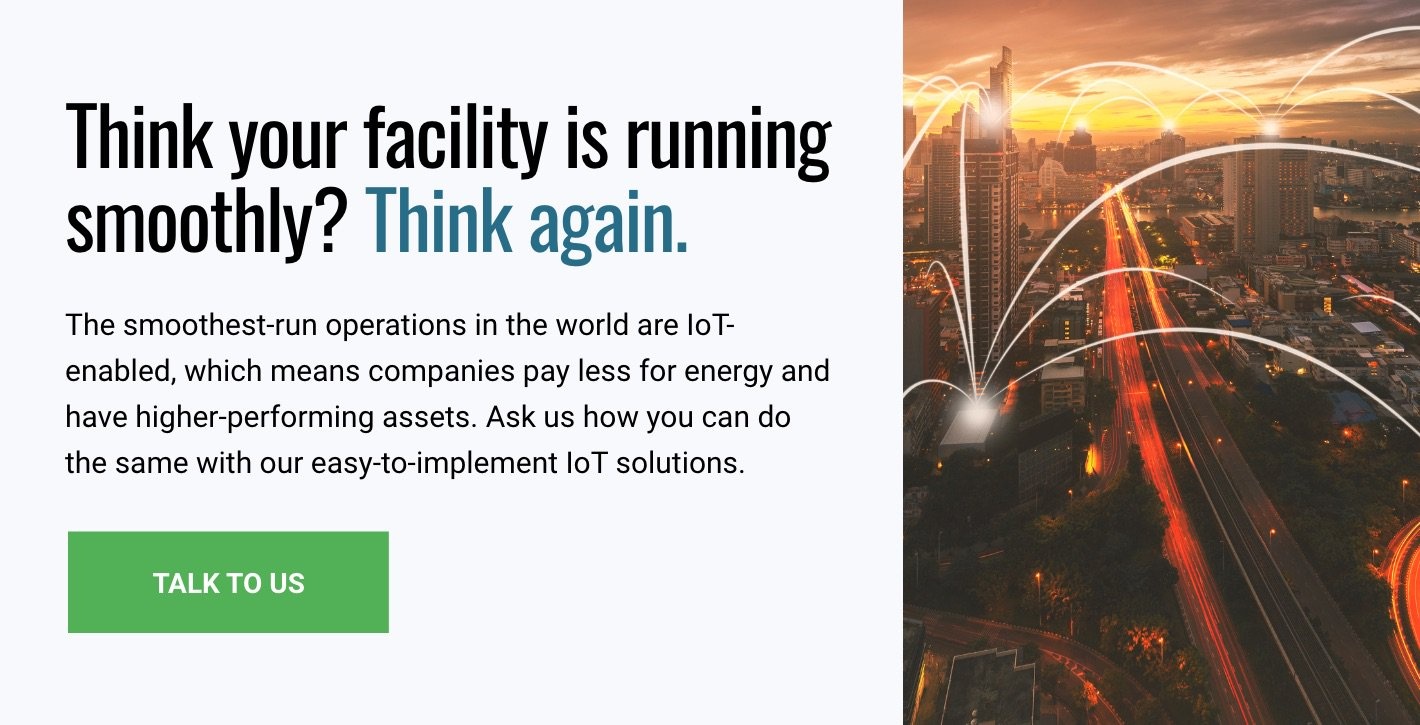The indoor environment of any building is complex, and hospitals are no exception. But in a facility dedicated to promoting the health and well-being of its inhabitants, hospital air quality is of special concern.
This article covers air quality as it relates to two areas of healthcare facilities—indoor air throughout the building and vaccine storage areas specifically—and how the Internet of Things (IoT) can help solve the challenges associated with hospital air quality monitoring.]
Monitoring & Maintaining Hospital Air Quality
Indoor Air Quality: The Hospital Environment
Compared to other facilities, it’s especially difficult to maintain a healthy indoor air quality in hospitals. There are a greater number of risk factors present that could threaten both the ability of hospital staff to do their jobs and patients to heal—the sole mission of such a facility. Indoor pollutants originate from both indoor and outdoor sources, for example:
- Operational equipment, such as ventilators and HVAC systems, could be responsible for poor air distribution and a lack of outside air, or may introduce polluted air from outside.
- Renovation projects within a hospital could compromise air quality by introducing dust contamination and dispersing fungal spores.
- Chemical compounds emitted from disinfectants, sterilizing substances, and other products pollute the air with volatile organic compounds (VOC).
- Airborne infectious diseases may spread before patients have been properly diagnosed.
- Excess moisture in wall spaces can foster mold growth.
In addition, the diversity of occupants and areas within a single facility compound the complexity of maintaining a healthful environment. For instance, patients and visitors have different levels of susceptibility due to their health statuses; also, operating rooms and waiting rooms, for example, must meet different air quality standards. (For in-depth information on hospital air quality standards see this article.)
Air quality is complex, but measuring it doesn’t have to be. Talk to us to find out how our air quality remote monitoring service could work at your hospital.
Some of the pollutants of concern that should be measured in hospitals include (but are certainly not limited to):
- Carbon dioxide (CO2)
- Carbon monoxide (CO)
- Particulate matter
- Total volatile organic compounds (VOC)
- Nitrous oxide
- Latex allergens
- Total bacteria count
- Radon
Any of the above pollutants have the potential to negatively impact health depending on length of exposure, pollutant level, and other factors. Indoor air quality monitoring may also reveal the presence of pollutants you don’t know about, prompting a new mitigation strategy. Temperature and humidity are two other characteristics of indoor air quality in hospitals that have a direct impact on patient comfort, and, by extension, patient satisfaction.
Vaccine Storage Areas
To work correctly, vaccines must be stored at the proper temperature, usually between 35 and 46 degrees Fahrenheit, from the time they are manufactured until they time they are administered. That means hospitals and other healthcare facilities that store vaccines for any period of time are an important part of the “cold chain”—the series of storage and distribution activities that allow vaccines to remain potent until they are used. Hospitals are required to continuously monitor the temperature of their vaccine storage areas, but despite that, deteriorated and expired vaccines are the cause of 19% of vaccine errors.
How To Proactively Address Hospital Air Quality
Most hospitals do their best to implement management policies and procedures that help control and mitigate indoor pollutants, but few employ advanced technology that can help them be proactive about detecting air quality issues.
[bctt tweet=”IoT technology offers a cost-effective way to help hospitals meet indoor air quality standards. ” username=”iotacomm”]
IoT technology offers a cost-effective way to help hospitals meet indoor air quality standards. Similar to the way it’s being used in other industries, the IoT gives you greater control over your environment—in this case, indoor air quality specifically—with remote monitoring. IoT sensors placed in various areas of your facility are capable of measuring in near real time temperature, humidity, VOCs, dust particles, CO2, and more. That data can then be analyzed and interpreted, allowing you to formulate a plan of action to restore a healthy indoor air quality.
An IoT remote monitoring system also serves as an automatic tracking/logging system for vaccine storage areas, making compliance with CDC guidelines easier.
Equipment Maintenance & Indoor Air QualityBecause some of your building’s critical operating equipment—HVAC, fans, and filters—have an impact on indoor air quality at your hospital, it’s important to ensure these mechanisms are continuously working at peak performance. Clogged filters, HVAC system air leakage, and other issues could all be unknowingly thwarting your efforts to maintain a healthy environment. To help avoid these problems—and meet hospital indoor air quality standards—make sure you’re practicing a combination of preventive and predictive building maintenance. |
Iota: Hospital Air Quality Monitoring You Can Count On
At Iota, we specialize in remote monitoring using the IoT. That means your healthcare facility’s indoor air quality can be measured from afar. Here’s how it works:
- We’ll provide your hospital or healthcare facility with IoT sensors for both your building and your vaccine storage areas, and guide you as to sensor placement.
- In real time, those sensors will record anything from CO2 and VOCs to carbon monoxide, dust particles, and more—whatever air quality characteristics you’re looking to learn more about.
- The sensors send the recorded information to an IoT gateway, which uploads the data to the cloud.
- Monitoring software presents the data to you in real time, on whatever computing device you choose. Our mobile and desktop dashboard delivers an easy-to-understand assessment of the current environmental conditions at any time.
- Our analytics and machine learning platform provides perspective, context, and insight surrounding the data via visual dashboards.
Our system can also provide you with alerts should any aspect of air quality fall outside certain predetermined parameters. For vaccines, that means you can adjust a temperature inconsistency in your storage area before it becomes a problem. You can also immediately detect, for example, a potentially damaging leakage in one area of the hospital and isolate it to minimize the impact on air quality elsewhere.
Ready to get started with hospital air quality monitoring? If you’d like to learn more about our remote monitoring services, contact us or visit our website. Then let us know how we can help!


